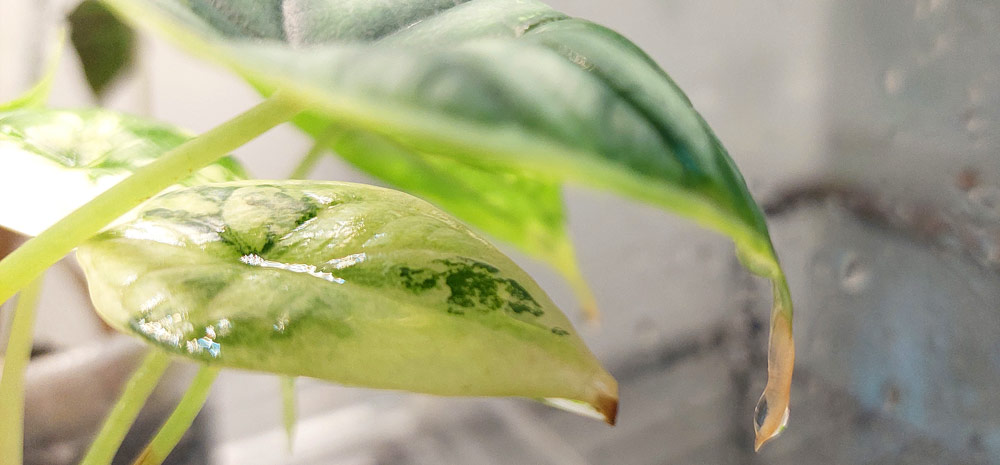How to Care for Alocasia Plants
Introduction:
Alocasia plants, known for their dramatic foliage and striking leaf shapes, are a favorite among houseplant enthusiasts. These tropical plants are often called “Elephant Ears” due to their large, heart-shaped leaves. While they can be a bit more demanding than other houseplants, with the right care, Alocasia plants can thrive and add an exotic flair to your indoor garden.
This guide will walk you through how to care for Alocasia plants to help them flourish in your home.
Light Requirements for Alocasia Plants
Alocasia light requirements are critical for maintaining the plant’s vibrant foliage and healthy growth. These plants thrive in bright, indirect light, similar to the dappled sunlight they would receive on the forest floor in their natural habitat. Direct sunlight can be too intense, leading to leaf burn, while too little light can cause the plant to become leggy, with smaller, less vibrant leaves.
For best results, place your Alocasia near an east or west-facing window where it can receive plenty of filtered light. If your space is low in natural light, consider supplementing with a grow light to meet the plant’s needs.
Watering Alocasia Plants: Tips and Best Practices
Watering Alocasia plants correctly is essential to keep them healthy. These plants prefer consistently moist soil, but they do not tolerate soggy conditions. Allow the top inch of soil to dry out between waterings, and then water thoroughly, ensuring that excess water drains away.
During the growing season, which is typically from spring through summer, Alocasia plants may need watering once a week. In the dormant period (fall and winter), reduce the watering frequency, as the plant’s growth slows down. It’s important to avoid letting the soil dry out completely, as this can cause the leaves to droop and the plant to become stressed.
Pro Tip:
Use room-temperature water to avoid shocking the roots, and consider using distilled or rainwater if your tap water is high in minerals.
Ideal Soil and Potting Mix for Alocasia Plants
Alocasia soil and potting mix should provide excellent drainage while retaining some moisture to keep the plant hydrated. A well-draining mix is essential to prevent root rot, a common issue with Alocasia plants. A good mix for Alocasias includes peat moss, perlite, and pine bark, which together create a light, airy substrate that supports healthy root development. You can also add a small amount of compost to provide additional nutrients.
Repot your Alocasia every 1-2 years or when the plant has outgrown its current pot, using a slightly larger container to allow for continued growth.

Humidity and Temperature for Healthy Alocasia Growth
Alocasia humidity and temperature needs are vital for replicating the plant’s natural tropical environment. Alocasias thrive in high humidity, ideally between 60-80%. Low humidity can cause the leaves to curl or develop brown edges. To maintain the necessary humidity, use a humidifier, place the plant on a pebble tray with water, or mist the leaves regularly.
In terms of temperature, Alocasia plants prefer warmth, with ideal temperatures ranging from 65-80°F. Cold drafts or temperatures below 60°F can stress the plant, leading to yellowing leaves or slowed growth. Always place your Alocasia in a warm spot, away from drafts or air conditioning vents.
Fertilizing Alocasia Plants: How and When
Fertilizing Alocasia plants is important for promoting vigorous growth and maintaining the plant’s striking foliage. During the growing season, feed your Alocasia every 4-6 weeks with a balanced, water-soluble fertilizer. A 20-20-20 NPK formula is suitable, providing equal amounts of nitrogen, phosphorus, and potassium.
Dilute the fertilizer to half the recommended strength to prevent overfeeding, which can lead to salt buildup in the soil. In the fall and winter, reduce the frequency of fertilization, as the plant’s growth naturally slows. Flushing the soil with water every few months helps remove any accumulated salts, ensuring the roots remain healthy.
Pruning and Propagating Alocasia Plants
Pruning and propagating Alocasia plants can help manage their size and encourage new growth. Regularly prune away any yellowing or damaged leaves to keep the plant looking its best. Use clean, sharp scissors to make cuts at the base of the petiole.
Propagating Alocasia plants is typically done through division, as many varieties produce offsets or “pups” that can be separated from the main plant. Carefully remove the plant from its pot and gently separate the offsets, ensuring each has its own root system. Replant the offsets in fresh potting mix and water them thoroughly.
Step-by-Step Propagation Guide:
- Carefully remove the Alocasia from its pot.
- Separate the offsets from the main plant, ensuring each has roots.
- Replant the offsets in fresh soil and water thoroughly.

Common Problems and Solutions for Alocasia Plants
Alocasia problems and solutions can help you identify and address common issues that may arise. Drooping leaves are often a sign of underwatering or insufficient humidity. Check the soil moisture and increase humidity around the plant if needed. Yellowing leaves can indicate overwatering or cold stress; ensure the plant is in a warm spot with proper drainage.
Alocasia plants are also susceptible to pests like spider mites and aphids, especially in dry conditions. If you notice pests, treat the plant with insecticidal soap or neem oil and regularly check the leaves for further infestations.
Choosing the Right Alocasia Variety for Your Home
Choosing the right Alocasia variety depends on your space and the specific look you want to achieve. The Alocasia ‘Polly’ is one of the most popular varieties, known for its dark green, arrowhead-shaped leaves with striking white veins. If you’re looking for something more unique, consider the Alocasia ‘Frydek’, which features velvety leaves with prominent white veins.
For a more dramatic statement, the Alocasia macrorrhiza or “Giant Taro” offers large, bold leaves that can dominate a room. When selecting a variety, consider the light and humidity levels in your home, as well as the size of the space where you plan to place the plant.
Frequently Asked Questions About Alocasia Care
Alocasia care FAQs can address common concerns and help you troubleshoot potential issues. Here are some frequently asked questions:
Q: How often should I water my Alocasia?
A: Water when the top inch of soil feels dry, ensuring the pot has drainage to prevent root rot.
Q: Can Alocasias tolerate low humidity?
A: Alocasias prefer high humidity. In low humidity environments, the leaves may curl or develop brown edges.
Q: Why are my Alocasia’s leaves drooping?
A: Drooping leaves are often a sign of underwatering or low humidity. Check soil moisture and increase humidity if needed.

Conclusion: Mastering Alocasia Care
Alocasia care summary: With the right care, Alocasias can be a stunning addition to any home, offering dramatic foliage and an exotic flair. By following these care tips, you’ll enjoy a healthy, thriving plant that enhances your indoor space.
Explore our other plant care guides for more tips and tricks!



 All Plants
All Plants Alocasias
Alocasias Anthuriums
Anthuriums Monstera
Monstera Philodendrons
Philodendrons Rare & Exotic Plants
Rare & Exotic Plants Succulents & Cacti
Succulents & Cacti Beginner
Beginner Intermediate
Intermediate Expert
Expert Low Light
Low Light Bright Indirect
Bright Indirect Direct Sun
Direct Sun New Arrivals
New Arrivals Best Sellers
Best Sellers On Sale
On Sale




